[/caption]
Production of NASA’s first space-bound Orion crew module has at last begun at NASA’s Michoud Assembly Facility (MAF) in New Orleans – that’s the same facility that for more than three decades was responsible for manufacturing the huge orange colored External Tanks for the just retired Space Shuttle Program.
The first weld of structural elements of the Orion crew cabin was completed by Lockheed Martin engineers working at Michoud on Sept. 9, 2011. This marks a major milestone on the path toward the full assembly and first test flight of an Orion capsule.
This state of the art Orion vehicle also holds the distinction of being the first new NASA spacecraft built to blast humans to space since Space Shuttle Endeavour was assembled at a California manufacturing facility in 1991.
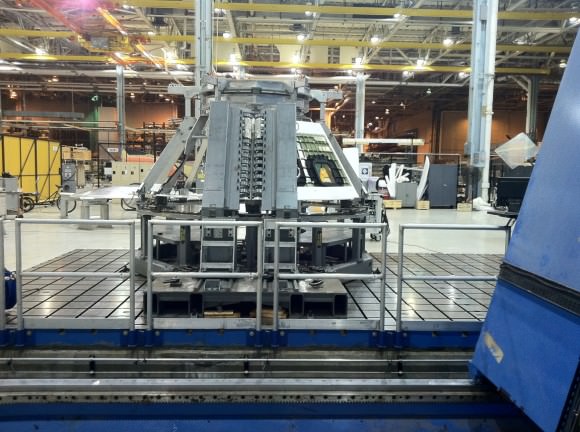
Eventually, Orion crew modules with astronaut crews will fly atop NASA’s newly announced monster rocket – the SLS – to exciting new deep space destinations beyond low Earth Orbit; such as the Moon, Asteroids and Mars.
“This marks the beginning of NASA’s next step to send humans far beyond Earth orbit,” said Orion program manager Mark Geyer. “The Orion team has maintained a steady focus on progress, and we now are beginning to build hardware for spaceflight. With this milestone, we enter the home stretch toward our first trip to space in this new vehicle.”
The first unmanned Orion test flight – dubbed OFT-1 – could come as early as 2013 depending on the funding available from NASA and the US Federal Government.
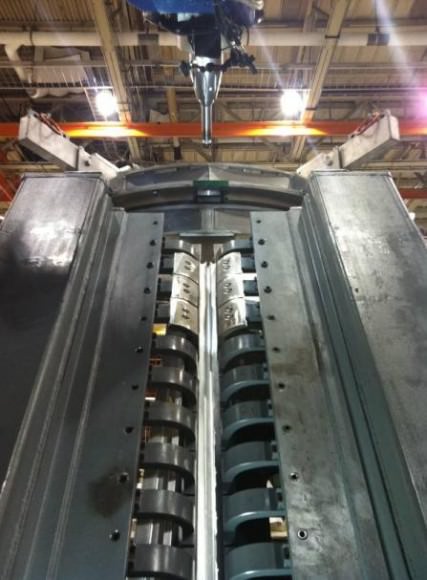
NASA is still deciding which rocket to use for the initial test flight – most likely a Delta 4 Heavy but possibly also the new Liberty rocket proposed by ATK and EADS.
The framework welds were completed using the same type of friction stir welding (FSW) process that was implemented to construct the last several of the 135 Space Shuttle External Tanks at MAF that flew during the shuttle program.
Friction Stir Welding creates seamless welds in the Aluminum – Lithium alloys used for construction that are far stronger and more reliable and reproducible compared to conventional welding methods.
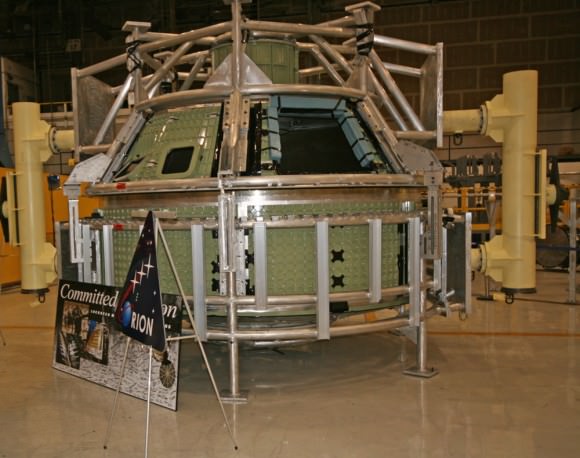
Orion spacecraft will be manufactured at Michoud in New Orleans, Louisiana, then sent to the Operations & Checkout Facility at Kennedy Space Center for final assembly and integration prior to launch.
Lockheed Martin is the prime contractor for Orion. The vehicle was recently renamed the Orion Multipurpose Crew Vehicle (MPCV) after being resurrected following its cancellation by President Obama as a key element of NASA’s now defunct Project Constellation “Return to the Moon” program.
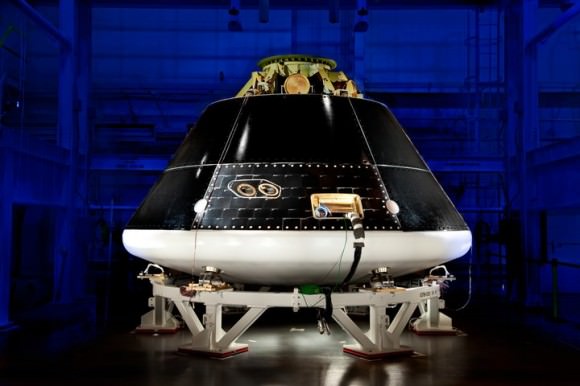
The Orion MPVC Multi Purpose Crew Vehicle ground test article (GTA) is shown at the Lockheed Martin Vertical Test Facility in Colorado. The GTA’s heat shield and thermal protection backshell was completed in preparation for environmental testing. Credit: NASA/Lockheed Martin
The first crewed Orion won’t launch until the 2nd flight of the SLS set for around 2020 said William Gerstenmaier, NASA Associate Administrator for Human Exploration and Operations (HEO) Mission Directorate, at an SLS briefing for reporters on Sept. 14.
Lockheed has already built an initial version of the Orion crew capsule known as the Orion Ground Test Article (GTA) and which is currently undergoing stringent vibration and acoustics testing to mimic the harsh environments of space which the capsule must survive.
Watch for my upcoming Orion GTA status report.
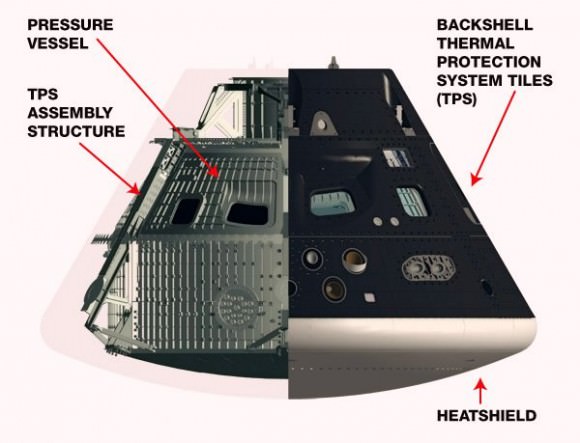
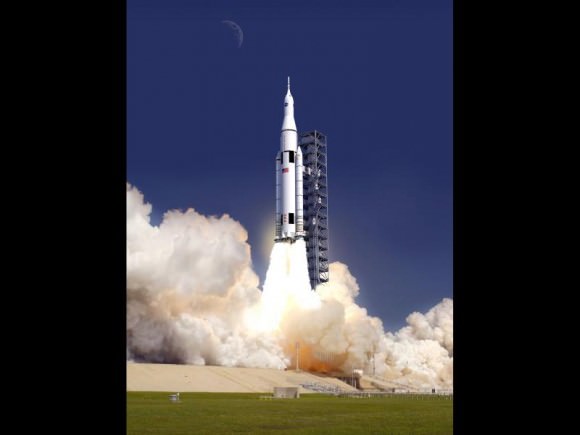
Read Ken’s continuing features about the Orion project and Orion GTA starting here:
First Orion Assembled at Denver, Another Orion Displayed at Kennedy Space Center
Lockheed Accelerates Orion to Achieve 2013 launch and potential Lunar Flyby

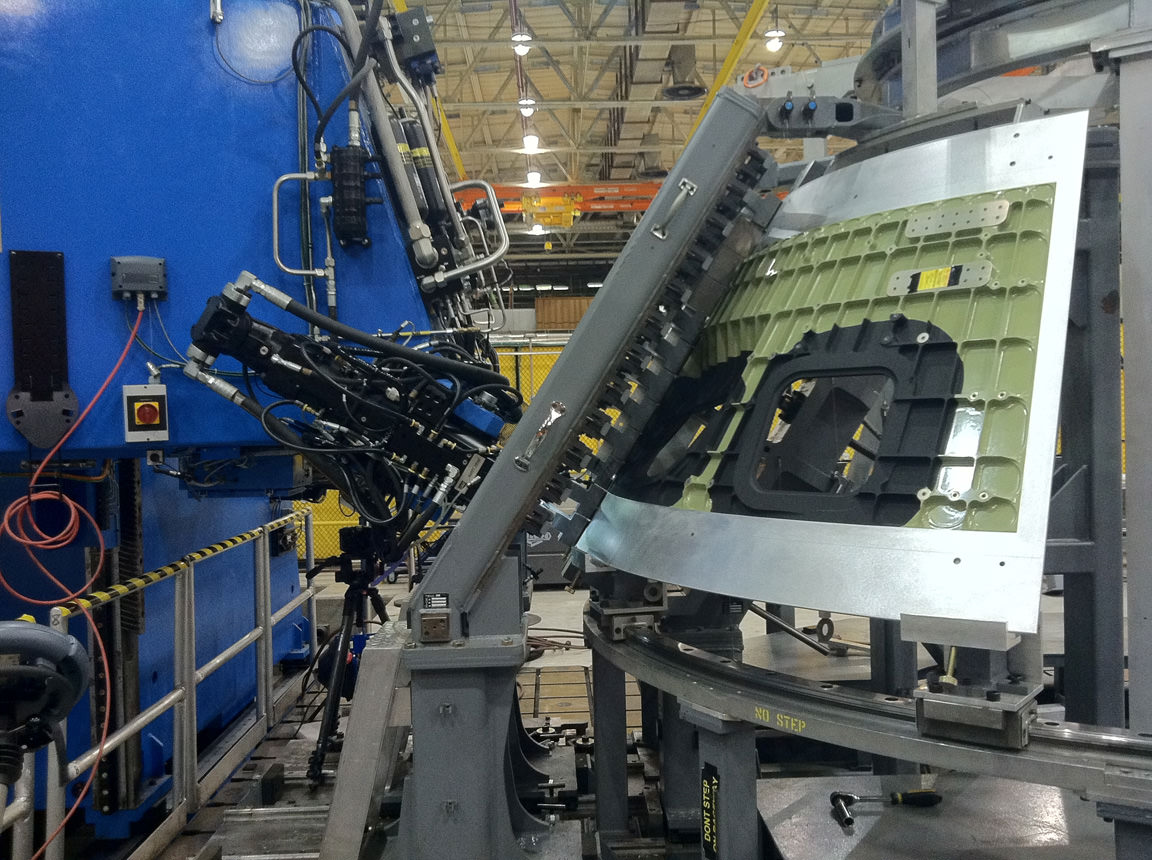
i dont understand. if the test flight could be as soon as 2013 then why would they wait 7 years for the 2nd manned flight. will they let it gather dust in a hanger for 7 years ???
I’m hoping they’re overestimating the timeline so they can launch a manned flight a few years earlier and then celebrate completing it ahead of schedule.
I’m hoping that doesn’t mean they are already anticipating delays and know they won’t make the 2013 date.
Let’s hope the SpaceX Dragons are there to meet them and show the way.
The capsule is a monster and they don’t have a rocket to lift it.
NASA really blew it with the Ares program going massively over budget and behind schedule.
Space X has a lot yet to prove before they are taken seriously so, the time line for them is practically the same as NASA’s (despite what their marketing campaign says).
NASA could spend money on man rating a Delta Heavy or building an Atlas Heavy but that would create an unwanted competitor for their design the STS.
It looks like NASA has great interest in keeping their managing partnership with ATK, Rocketdyne and the rest of the shuttle supply base. In other words they have no REAL interest in giving up the design of rockets or the directing of spending even if it takes longer. So, we wait for seven years for them patch together a rocket out of shuttle components and hope that the cost numbers don’t become so huge that it gets killed (again).
I am not sure Space-X have as much as prove as the paper tiger ATK/EADS, they have launched successfully and with other capsules.
Their problem is that their largest launcher Falcon-9 is capable of:
a) Launching 10.4 Mg to LEO.
The monstrous MPCV weighs 21.2 Mg with service module and LAS. If only the crew module is launched, weighing 8.9 Mg, SpaceX can do it.
b) Launching 5.2 m diameter cargo in a fairing; the rocket is 3.7 m diameter.
The monstrous MPCV is 5 m diameter. If a module adapter is allowed and constructed, SpaceX should be able to do it.
As a comparison, the SpaceX Dragon has roughly the same habitable volume (~ 7 m3 habitable volume) as the NASA MPCV (~ 9 m3 habitable volume) for 1/4 of the mass ( ~ 5.5 Mg wet mass of a 4.2 Mg dry mass and 1.3 Mg propellant against ~ 21.2 Mg wet mass).
SpaceX has wisely decided to have their cargo section unpressurized (~ 14 m3), making a total of ~ 21 m3* Dragon volume against MPCV’s ~ 20 m3 volume.
Also, we compare apples and pears right now. The Dragon fuel mass is for LEO purpose only. Fully loaded it would weigh half of the MPCV, yet take twice as many people if need be.
—————–
* Actually SpaceX brochure says “7-10 m3” pressurized payload volume, but it isn’t in the capsule. If it is add on volume, it would total ~ 24 m3 payload volume.
If Space X pulls off the ISS freight hauling missions without any issues (such as they admitted finally on the Dragon test flight) then I agree that they will be in the running. ATK/EADS is the zombie undead Ares rocket, it will get consideration because ATK builds the shuttle solids and NASA wants to keep them.
There is nothing harder to kill than a bad idea with funding.
Btw, I think the rest of your analysis is bulls eye.
It is also unclear to me if the SLS cost estimate is a paper construction, a “keep them happy” number while the project is on a running cost basis, or if it is a proper estimate.
Earlier reports quoted twice that number, which is in the original kill zone of these Constellation type projects. And I don’t see that any of Augustin’e recommendations (running projects sustainably instead of using up the capital early, make use of new technology, make use of commercials) are onboard. So I don’t see how it can be cheaper, aside from what the added delays provides.
Though ATK/EADS launcher could be a commercial derivative, if it is constructed. So that, and the modularity thinking in the new design components, are taking money off and put them on partners.
But they were promptly put back by the requirement that the SLS will be man rated, as opposed to its original design as Ares V. And _that_ modularity (man vs cargo lift) is rescinded.
Are you going to quote a source at NASA that the ATK/EADS paper rocket is being considered?
The ATK/EADS rocket with planned Vulcain 2 upper stage could lift, at most, 44,500 lb to LEO.
The Orion/MPCV weighs 46,848 lb.
You can save weight by leaving out the service module, propellant and throwing overboard anything that isn’t permanently fixed to the capsule, but then the test diminishes rapidly to just the Thermal Protection System and avionics. That’s a very limited, very expensive way of testing just to keep ATK/EADS happy.
According to an OFT-1 article at NASA Spaceflight dot com, “A launch date of July, 2013 has been set, with the Delta IV Heavy assigned to the role of launch vehicle.”
Interesting.
But mainly, as of yet the ATK/EADS is an unfunded paper construct, it didn’t get any CCDev money. If i understand the fresh commercial crew agreement between NASA and ATK/EADS, if the rocket gets constructed and can launch, they may use it. That would likely put it too late, initial first launch was planned precisely at 2013.
Why use the term Mg when you could use t for ton?
Because if you use ton then some folks will not know if you mean ton or tonne since some use “ton” for either. If you use mega-gram (Mg) then there is no confusion.
Holy stone knives and bearskins Mr. Spock! This is what we get with a government that will give billions to governments who are our enemies and not give a flaming rats rear end to spend on a better and at the least more aesteticly appealing vehicle..bring the shuttles out of mothballs till they can at least give us a modern 21st century that doesn’t look like it was built by extras from a Jules Verne novel. Ugly looking isn’t the word. I expected better by the people that put us on the moon.
Holy stone knives and bearskins Mr. Spock! This is what we get with a government that will give billions to governments who are our enemies and not give a flaming rats rear end to spend on a better and at the least more aesthetically appealing vehicle..bring the shuttles out of mothballs till they can at least give us a modern 21st century spacecraft that doesn’t look like it was built by extras from a Jules Verne novel. Ugly looking isn’t the word. Russia and the rest of the world are laughing themselves stupid. I expected better from the people that put us on the moon.
Mega, mega, megacorp! Megacorp spawn!
Mega, mega, megacorp! Megacorp brawn!
Mega, mega, megacorp! Megacorp pawns!
And the chant goes on and on and on….
Meanwhile…. GO SpaceX!
Well, practical reality and science fiction seem to part ways sometimes. Orion’s design is related to the physics of coming back from orbits beyond Earth. The shuttle, and for that matter other winged vehicles (like X-37 or Sierra Nevada’…s HL-20 derivative), is capable of coming back from low-earth orbit, which is a relatively slow speed. But, when you are coming back to Earth from beyond, you are coming back at significantly faster speeds. At these faster speeds, protecting sharp edges (like those on wings) is beyond the thermal materials technologies we have now. Shuttle never went higher than about 5% of 1 Earth diameter above the surface, and just fast enough to hold orbit (17 kmph). Orion looks like Apollo designs because it has the same mission as Apollo. We don’t pick our designs based on looks. We pick them based on the most efficient and least expensive configuration that can handle the mission requirements. Missions take us to capsules, not a lack of imagination. 🙂
Well, practical reality and science fiction seem to part ways sometimes. Orion’s design is related to the physics of coming back from orbits beyond Earth. The shuttle, and for that matter other winged vehicles (like X-37 or Sierra Nevada’…s HL-20 derivative), is capable of coming back from low-earth orbit, which is a relatively slow speed. But, when you are coming back to Earth from beyond, you are coming back at significantly faster speeds. At these faster speeds, protecting sharp edges (like those on wings) is beyond the thermal materials technologies we have now. Shuttle never went higher than about 5% of 1 Earth diameter above the surface, and just fast enough to hold orbit (17 kmph). Orion looks like Apollo designs because it has the same mission as Apollo. We don’t pick our designs based on looks. We pick them based on the most efficient and least expensive configuration that can handle the mission requirements. Missions take us to capsules, not a lack of imagination. 🙂
Well, practical reality and science fiction seem to part ways sometimes. Orion’s design is related to the physics of coming back from orbits beyond Earth. The shuttle, and for that matter other winged vehicles (like X-37 or Sierra Nevada’…s HL-20 derivative), is capable of coming back from low-earth orbit, which is a relatively slow speed. But, when you are coming back to Earth from beyond, you are coming back at significantly faster speeds. At these faster speeds, protecting sharp edges (like those on wings) is beyond the thermal materials technologies we have now. Shuttle never went higher than about 5% of 1 Earth diameter above the surface, and just fast enough to hold orbit (17 kmph). Orion looks like Apollo designs because it has the same mission as Apollo. We don’t pick our designs based on looks. We pick them based on the most efficient and least expensive configuration that can handle the mission requirements. Missions take us to capsules, not a lack of imagination. 🙂